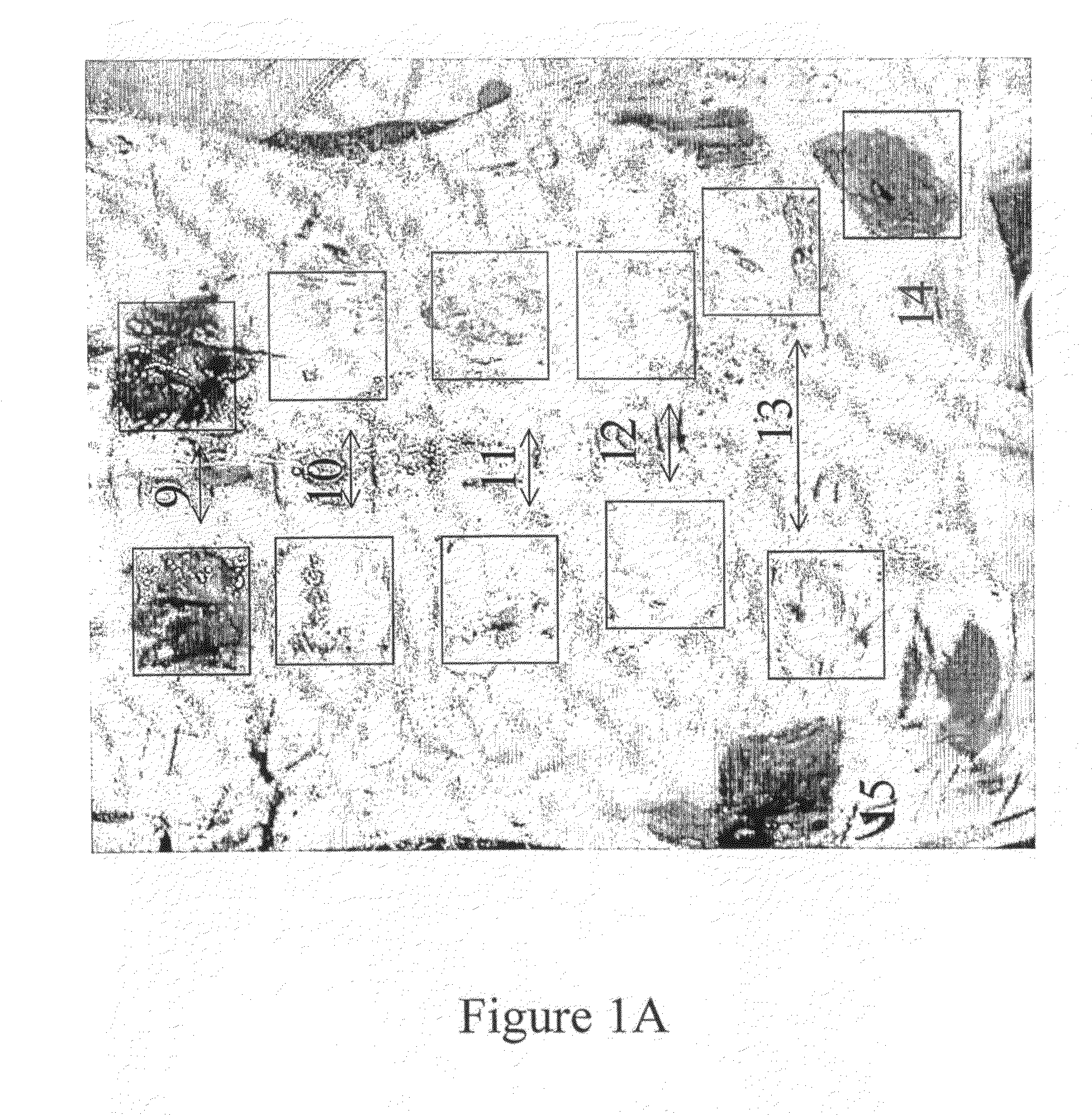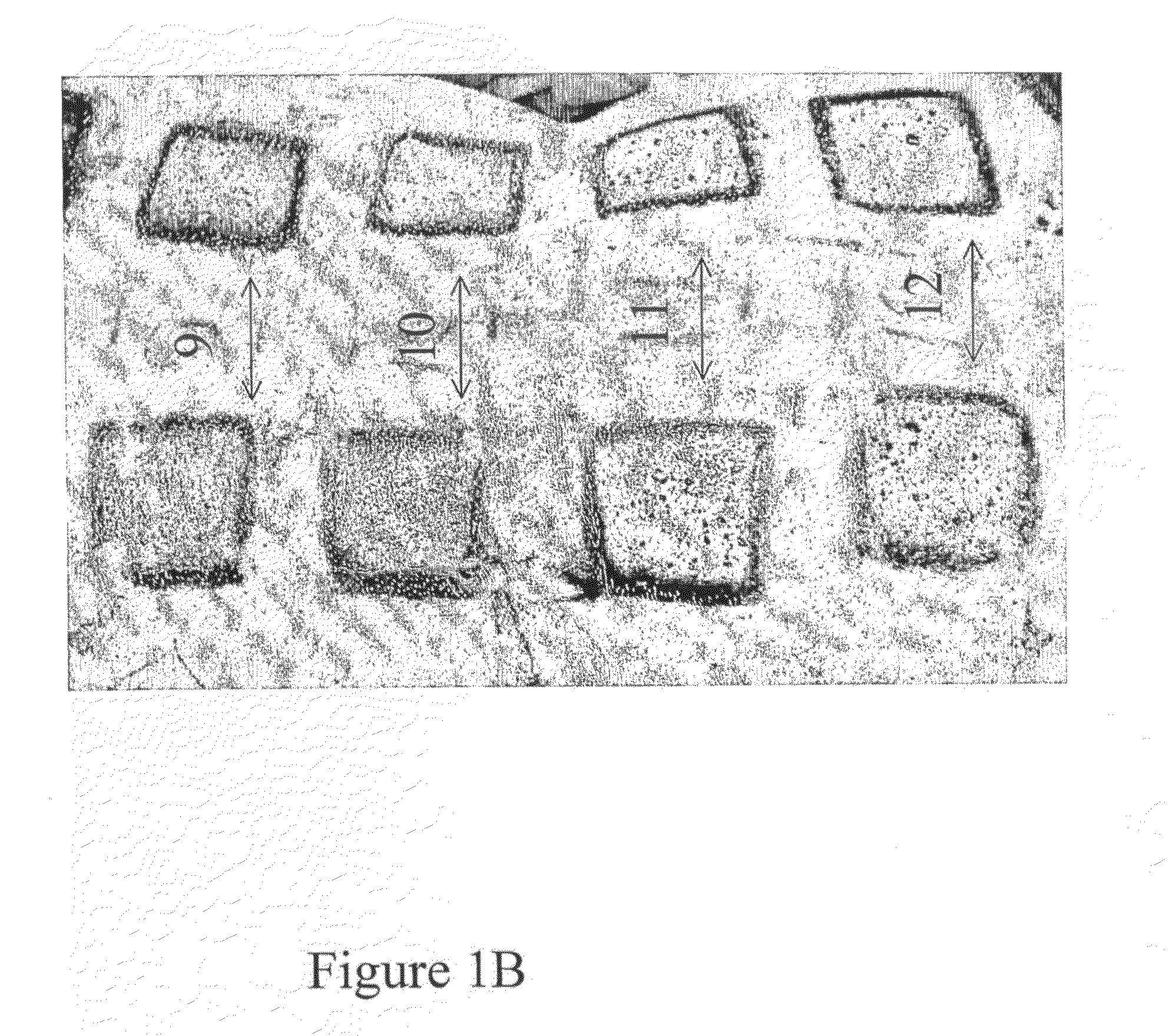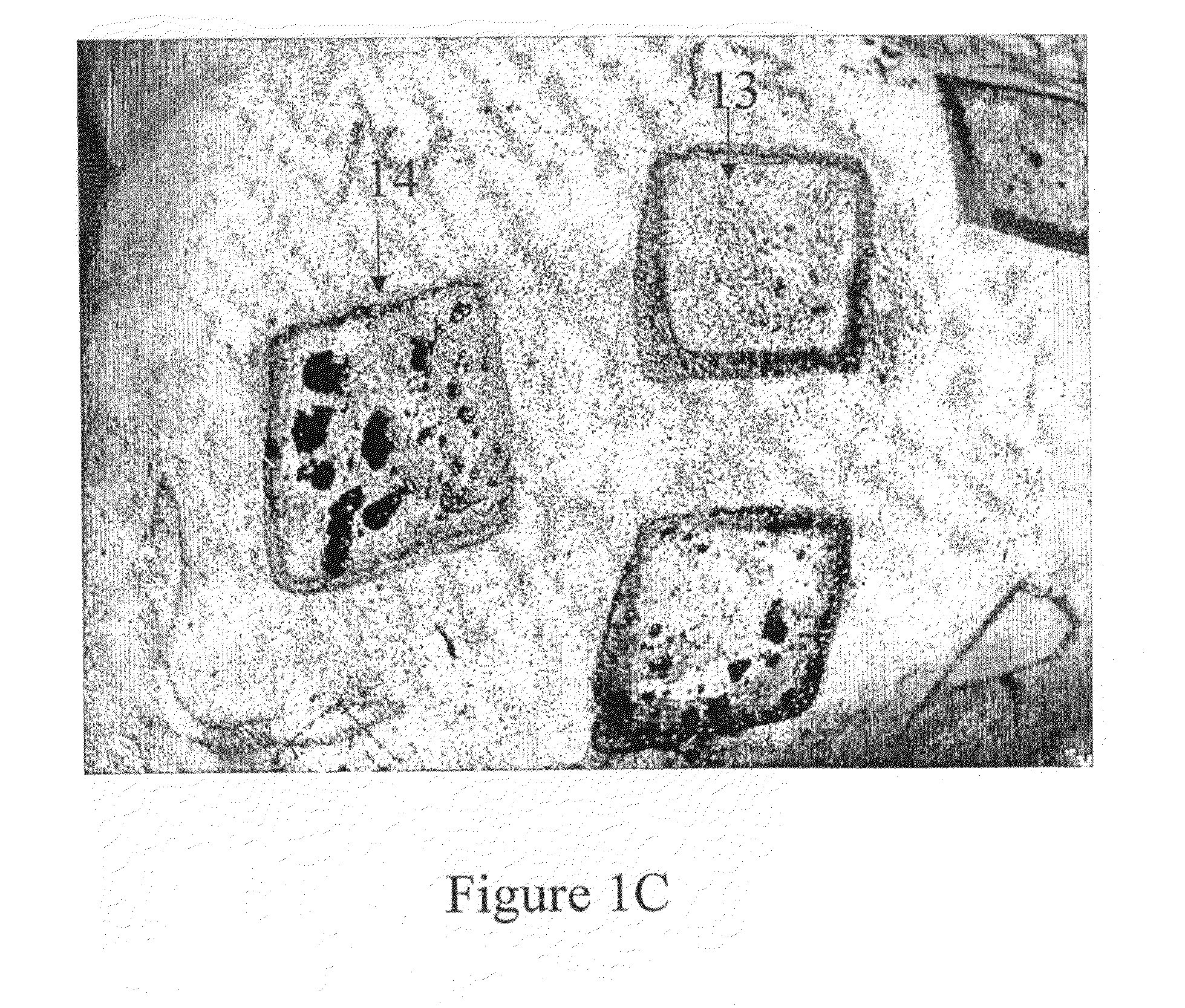Compositions and methods for dermatological wound healing
a dermatological wound and composition technology, applied in dermatological disorders, inorganic active ingredients, peptide/protein ingredients, etc., can solve problems such as severe infection
- Summary
- Abstract
- Description
- Claims
- Application Information
AI Technical Summary
Benefits of technology
Problems solved by technology
Method used
Image
Examples
example 1
Stability of the Debriding Composition
[0135]The activity, proteolytic and amidolytic, of the debriding mixture was investigated by an animal assay for eschar removal in young swine model. The results indicated that the activity of the debriding mixture following 3 or 9 months of storage at 25° C., 2-8° C. and −18° C. (Table 3, locations 3-6 and 9-12) remains similar to the activity of fresh mixtures (Table 3, locations 1 and 2).
example 2
Debridment with the Debriding Composition and Silver Sulphadiazine or AgNO3
[0136]The model was a radiant-heat thermal burn in an anesthetized young domestic pig. In order to create test conditions which are in accordance with the therapeutic use of the test article, deep dermal and full thickness burns were inflicted in all animals by applying a radiant heat device to the back to cover an area of approximately 3% TBSA (4.5×4.5 cm) for each burn. A gross evaluation of the debriding activity of the test article (the amount of eschar removed) was assessed and photographically documented. According to the dosage assay, the most effective final dosage was 2 g of the debriding mixture powder per 100 cm2 burn, was mixed with one of the following (a) 20 g of hydrating gel; (b) Silverol™; (c) hydrating gel with AgNO3 0.5%; (d) AgNO3 0.5% with di-sodium hydrogen phosphate USP 2.7% W / W in water.
[0137]Silverol™ did not attenuate and did not inhibit the debriding activity of the debriding mixtu...
PUM
| Property | Measurement | Unit |
|---|---|---|
| time | aaaaa | aaaaa |
| temperature | aaaaa | aaaaa |
| molecular weight | aaaaa | aaaaa |
Abstract
Description
Claims
Application Information
 Login to View More
Login to View More - R&D
- Intellectual Property
- Life Sciences
- Materials
- Tech Scout
- Unparalleled Data Quality
- Higher Quality Content
- 60% Fewer Hallucinations
Browse by: Latest US Patents, China's latest patents, Technical Efficacy Thesaurus, Application Domain, Technology Topic, Popular Technical Reports.
© 2025 PatSnap. All rights reserved.Legal|Privacy policy|Modern Slavery Act Transparency Statement|Sitemap|About US| Contact US: help@patsnap.com



